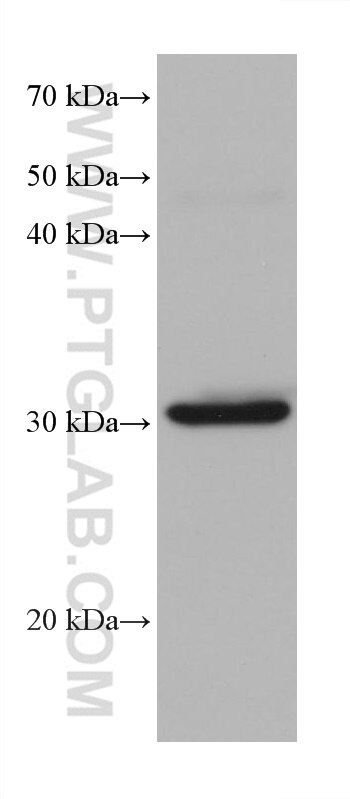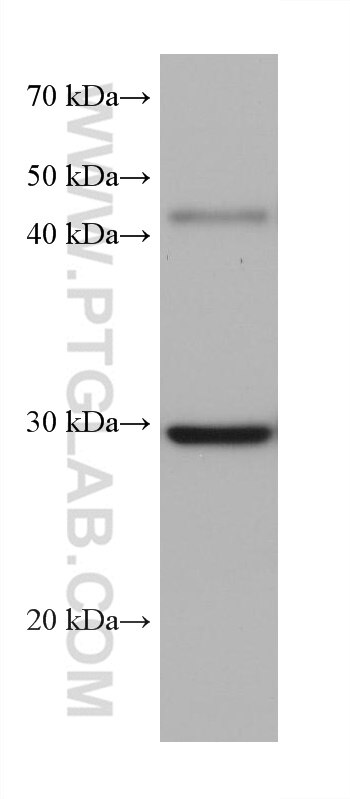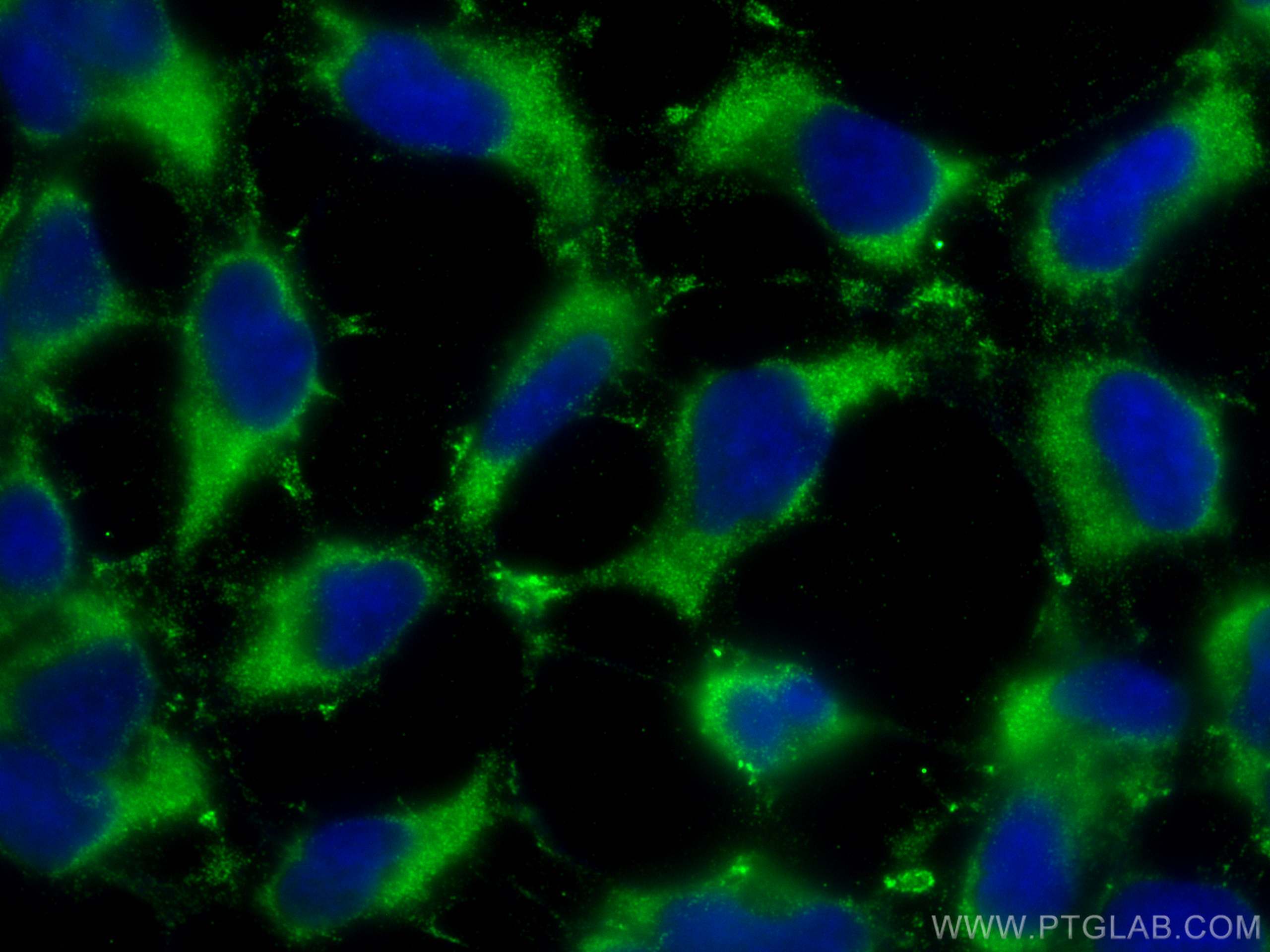Anticorps Monoclonal anti-PBLD
PBLD Monoclonal Antibody for WB, IF/ICC, Indirect ELISA
Hôte / Isotype
Mouse / IgG1
Réactivité testée
Humain, porc
Applications
WB, IF/ICC, Indirect ELISA
Conjugaison
Non conjugué
CloneNo.
1G11D4
N° de cat : 68317-1-PBS
Synonymes
Galerie de données de validation
Informations sur le produit
68317-1-PBS cible PBLD dans les applications de WB, IF/ICC, Indirect ELISA et montre une réactivité avec des échantillons Humain, porc
| Réactivité | Humain, porc |
| Hôte / Isotype | Mouse / IgG1 |
| Clonalité | Monoclonal |
| Type | Anticorps |
| Immunogène | PBLD Protéine recombinante Ag23827 |
| Nom complet | phenazine biosynthesis-like protein domain containing |
| Poids moléculaire observé | 30 kDa |
| Numéro d’acquisition GenBank | BC009738 |
| Symbole du gène | PBLD |
| Identification du gène (NCBI) | 64081 |
| Conjugaison | Non conjugué |
| Forme | Liquide |
| Méthode de purification | Purification par protéine G |
| Tampon de stockage | PBS only |
| Conditions de stockage | Store at -80°C. 20ul contiennent 0,1% de BSA. |
Informations générales
PBLD, also termed as MAWBP, was first identified from a human liver cDNA library using a yeast two-hybrid technique by Iriyama et al. As the only representative of phenazine biosynthesis-like protein family, PBLD is widely expressed in human tissues, such as brain, heart, lung, liver, pancreas, kidney, and placenta. Its expression is elevated in several diseases processes, including insulin resistance, folate deficiency, and hypotension. PBLD has been proved to be involved in gastric carcinogenesis, PBLD expression was attenuated in gastric cancer (GC) tissues, and negatively regulated the growth and invasion in gastric cancer cell-lines by inhibiting TGF-β1-induced EMT (Epithelial-Mesenchymal Transition).(PMID: 11355021, 17929853, 23687415, 26594798)







